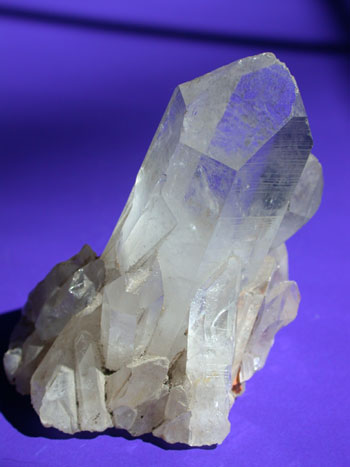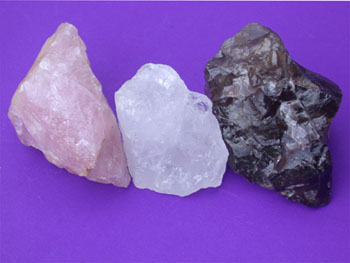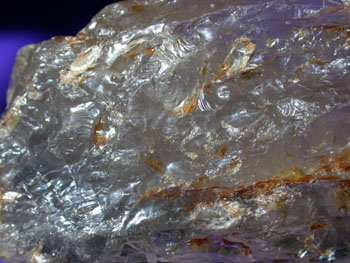
|
| A large broken quartz crystal has irregular fractures but no fractures. Quartz is a harder mineral than feldspar (H = 7) and in igneous and metamorphic rocks is normally translucent and dark to light gray in color (it depends in part on how dark or light the surrounding minerals are).
Quartz comes in several colors: clear, gray (= smoky quartz), purple (= amethyst), white (= milky quartz), and pink (= rose quartz). The color variations stem from such things as radiation damage, tiny fluid bubbles (inclusions), and tiny amounts of trace metals. |
|
The flat surfaces are crystal faces, not cleavage planes. A distinctive aspect of quartz crystal faces is that the vertical faces have tiny grooves on their surface (you can see them on a face on the right side). Some crystal shops sell quartz that has been cut and polished to look like a natural crystal, but these lack the tiny grooves. |
 |
|
Click on the following to get super close-ups of rose quartz, clear quartz, and smoky quartz. |
 |
|
The orange areas are iron oxide stains. Some quartz appears pale orange due to a thin coating of iron oxides. |
 |
Go back to Common Minerals page
Return Home
|
|
|